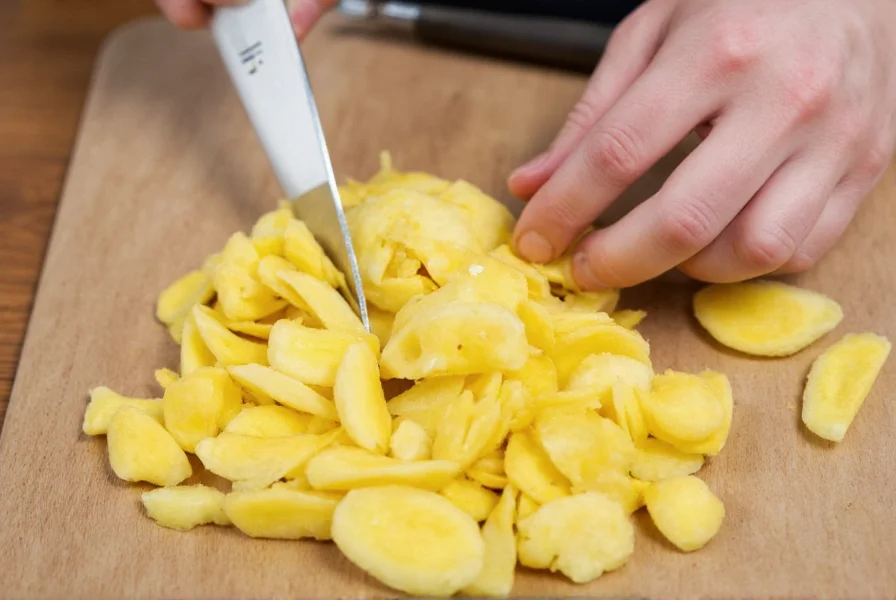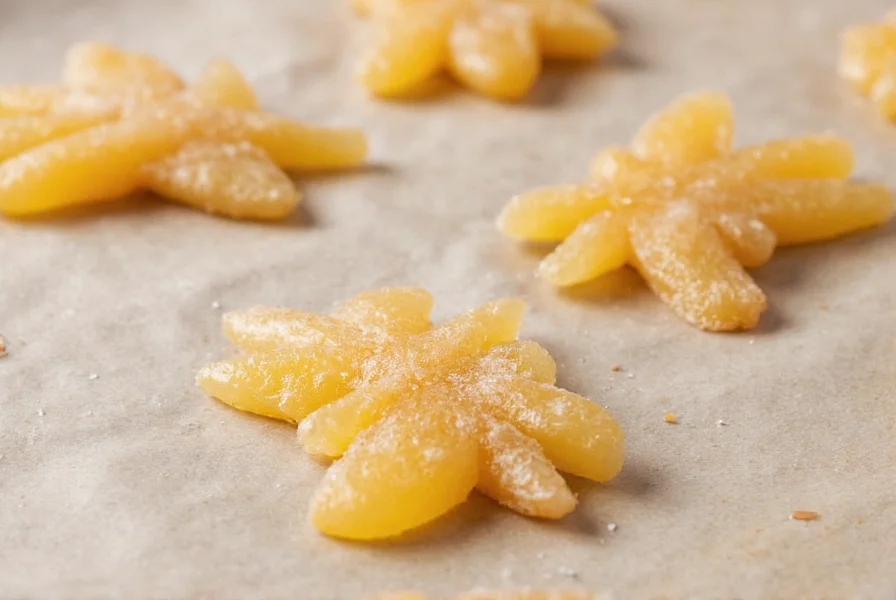Creating your own candied ginger offers significant advantages over store-bought versions. You control the ingredients, avoid preservatives and artificial colors, and can adjust the sweetness level to your preference. The process requires minimal equipment and transforms ordinary ginger into a versatile pantry staple that keeps for months.
Why Make Your Own Candied Ginger
Commercial candied ginger often contains corn syrup, sulfites, and other additives to extend shelf life. Homemade versions let you create a cleaner product with pure ingredients. Freshly made candied ginger has a brighter ginger flavor and more satisfying texture than many mass-produced alternatives. The process is surprisingly simple and yields approximately 1.5 cups of finished product from just 1 pound of fresh ginger.
Ingredients and Equipment Needed
Before starting your ginger candy making journey, gather these essentials:
| Ingredients | Equipment |
|---|---|
| 1 pound fresh ginger root | Medium saucepan with lid |
| 2 cups granulated sugar (plus 1/2 cup for coating) | Sharp vegetable peeler |
| 2 cups water | Sharp knife or mandoline slicer |
| Optional: 1 tablespoon lemon juice | Baking sheet |
| Parchment paper | |
| Cooling rack |

Step-by-Step Ginger Candy Making Process
The complete process for how to candy ginger takes approximately 2 hours, with 30 minutes of active preparation time. Follow these steps for perfect results:
Preparation Phase
- Peel and slice: Use a vegetable peeler or spoon to remove the ginger skin. Slice into 1/8-inch thick pieces. Thinner slices candy faster but may become too brittle.
- Blanch (optional but recommended): Place slices in a saucepan, cover with cold water, and bring to boil. Drain and repeat. This reduces bitterness and creates a more balanced flavor profile.
- Prepare syrup: Combine 2 cups sugar and 2 cups water in clean saucepan. Add optional lemon juice. Bring to gentle simmer, stirring until sugar dissolves completely.
Cooking Phase
- Simmer ginger: Add ginger slices to syrup. Return to simmer, then reduce heat to low. Cover and cook for 45-60 minutes until ginger becomes translucent and tender when pierced with a fork.
- Cool in syrup: Remove from heat and let ginger cool completely in the syrup (about 2 hours). This allows the ginger to fully absorb the sweetness.
Finishing Phase
- Drain and dry: Remove ginger slices from syrup and place on a wire rack over parchment paper. Let drain for 1-2 hours until no longer dripping.
- Coat with sugar: Toss cooled ginger in remaining 1/2 cup sugar until evenly coated. For extra sweetness, you can dip in melted white chocolate after sugaring.
- Dry completely: Spread coated ginger on parchment-lined baking sheet. Let air-dry at room temperature for 8-12 hours or until no longer sticky to the touch.

Tips for Perfect Candied Ginger Every Time
- Choose fresh ginger: Look for firm, smooth roots with tight skin and no wrinkles. Younger ginger has thinner skin and less fibrous texture.
- Uniform slicing: Consistent thickness ensures even cooking. A mandoline slicer works well for precision.
- Syrup ratio matters: The 1:1 sugar-to-water ratio creates the ideal concentration for preserving without crystallizing.
- Patience pays off: Don't rush the cooling process in syrup—this step is crucial for flavor development.
- Save the syrup: The leftover ginger syrup makes excellent tea sweetener or cocktail mixer.
Troubleshooting Common Issues
Even experienced cooks encounter challenges when learning how to candy ginger. Here's how to address frequent problems:
- Ginger too fibrous: You may have used older ginger or sliced against the grain. Next time, slice with the grain and choose younger roots.
- Crystallized sugar: If sugar crystals form during cooking, add 1 tablespoon of water and gently stir until dissolved.
- Too sticky after drying: Extend drying time or reduce humidity in your kitchen. A dehydrator set to 115°F for 2-3 hours can help.
- Not sweet enough: For sweeter ginger, extend the cooling time in syrup to 4-6 hours or make a second batch with slightly more sugar.
Storing Your Homemade Candied Ginger
Proper storage ensures your candied ginger maintains quality for months. Place completely dried ginger in an airtight container with layers separated by parchment paper. Store at room temperature for up to 3 months. For extended shelf life (up to 6 months), refrigerate. Avoid moisture exposure, which causes stickiness and potential mold.
The crystallized ginger preparation process creates a natural preservative effect through sugar concentration. As long as your ginger is properly dried and stored away from humidity, it should maintain its texture and flavor without spoiling.
Creative Uses for Your Candied Ginger
Beyond enjoying it as a snack, homemade candied ginger elevates numerous recipes:
- Chop finely and add to cookie or scone dough
- Stir into oatmeal or yogurt for a spicy-sweet boost
- Use as topping for ice cream or cheesecake
- Infuse into simple syrup for craft cocktails
- Add to stir-fries for sweet-spicy complexity
- Grind into powder for ginger spice blends
Many people seeking how to candy ginger at home want it specifically for digestive benefits. The combination of ginger's natural compounds with sugar creates a soothing treat that can help with nausea when consumed in moderation.











 浙公网安备
33010002000092号
浙公网安备
33010002000092号 浙B2-20120091-4
浙B2-20120091-4